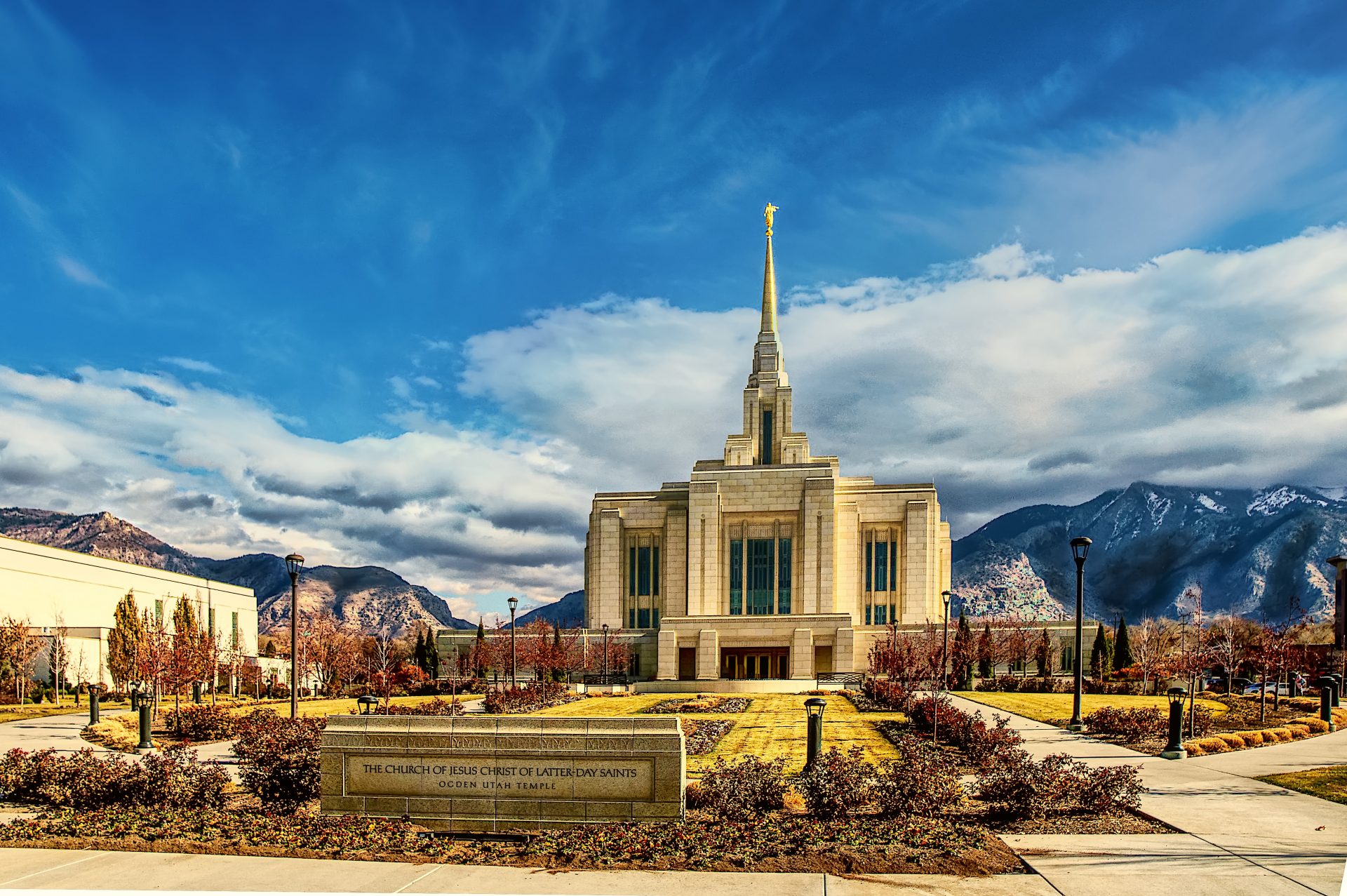For as long as I can remember, I have heard the same phrase regurgitated over and over again at church. It’s likely you’ve heard it thousands of times over the course of your life in the church as well.
That phrase is: “I know the church is true…”
I’ve used that phrase hundreds, maybe even thousands of times throughout my own life. But what does it all mean to say “the Church is true?” There are other related phrases you’ll be familiar with as well such as “I know I belong to the true church” or “I’m so glad I found the one and only true church.” But nothing might annoy a member of another Christian denomination more than when a member of The Church of Jesus Christ of Latter-day Saints makes that statement or claim. A new friend of mine and an adult convert to the church recalled that phrase almost as nails on a chalkboard during his investigative process.
Though an LDS member may not come out and say it, another person may interpret this “one true church” claim as an assault on their own faith or an attempt to make another’s faith or church irrelevant or inferior. A sort of Rameumptum if you will… with the insinuation of “I’m so glad I wasn’t born where you were born or raised in one of those other false churches.”

I don’t think that’s the intent of most of the members who use the phrase. I know when I have used that phrase, it has always been out of gratitude for my understanding of the fullness of the gospel and the restoration. But still, I can see how others might not interpret it the way I meant it when I said it.
So where did this language of “the one true church” come from anyway and why did we begin saying it so often?
It came out of Doctrine and Covenants Section 1, and in this case, the oft repeated phrase comes from the Lord. He says that this church is the “only true and living church upon the face of the whole earth with which I the Lord am well pleased.” Seems pretty cut and dry, right? The Lord is pleased with one church… the only true and living church. The restored Church. It’s kind of difficult to run away from or discount that language if you believe that the Doctrine and Covenants is indeed scripture, and if the Lord is saying it… then we should be able to say it too, right?
But I don’t think the Lord meant it in the way that it is so frequently conveyed over the pulpit and then interpreted by others.
If one says, “the Church is true”… what do they mean? Do they mean that the people are true? Or do they mean that the institution is true? Or maybe both?
If you say anything is “true,” what does it actually mean?
The etymology of the word “true” in the form of an adjective describes something as being “accurate or exact in relation to the direction.” That is key. “In relation to the direction.” It denotes making something “correctly positioned, balanced, or aligned; upright or level.” As a verb, the word “true” denotes “bringing something (an object, wheel, or other construction) into the exact shape, alignment, or position required.” A plane bearing 20 degrees west of north at 325mph that has been calibrated to reach it’s intended destination, for example.
In effect, making something “true” is the act of taking something and correctly positioning it and then pointing it in the right direction. It’s less about where the church is now and more about the direction the church is headed in the future.
This is what the Lord is explaining to Joseph Smith in Hiram Ohio on November 1, 1831. He, (the Lord) is “well-pleased” that He was able to “position,” organize and restore an institution out of a broken, fragmented, and confused religious world, (obscurity and darkness) and then set a course for that church to go on. But even after having charted a “true” course, He knew that this church would have to make course corrections over time. So the Lord coupled the word “true” with the word “living” in order to further describe the nature of that church. The “living” part of the church is what continues to make that church move in a “true” direction. The “living” part of the church is what continually provides the course corrections, and without that, the church would no longer be true. The direction of the church is everything. Any institution that loses its direction becomes an institution that is not on a “true” course or trajectory. For instance, the Lord placed the whole church under condemnation for it’s neglect of the Book of Mormon in 1832. I’m assuming that the Lord was not well pleased with the direction of the church at that time, and his 1832 revelation to Joseph Smith about their neglect of the Book of Mormon is an example of a course correction made by the Lord through his “living” prophet in order to steer the ship back in a “true” direction.
That’s really what sets the Church of Jesus Christ of Latter-day Saints apart from other denominations. Revelation. Living prophets. Direction. Direction. Direction. God picked up his church, out of the wilderness, out of the dust, out of the darkness… placed it on a secure and steadfast foundation of apostles, prophets, and revelation… and then pointed that church in the right direction. That is how the church became “true” in relation to the direction it was moving.

I believe we should specify what we mean when making a statement about the truthfulness of the church. If someone stands up and says that “we have all truth” contained within this church, then that is in direct contradiction to our basic beliefs. We don’t claim to have all truth, but in accordance with our articles of faith, we claim to be seekers of all truth. We are continually seeking after and embracing all truth from wherever it can be found. The church cannot be completely “true” in the sense of completeness or perfection. How can it be when we are anxiously waiting for more light and knowledge? “We believe that He (God) will yet reveal many great and important things pertaining to the Kingdom of God.” More truth, if you will. That is the “living” part of the church that keeps the church moving in a “true” direction.
What we do claim is that this church has been given the proper authority to administer the saving ordinances for the living and for the dead. That, coupled with a living prophet and continued revelation is what provides “direction” in a perplexed world. That is what most people mean when they say “the church is true.” But not everyone is going to understand that, especially if they’re visiting us for the first time.
Imagine how much more helpful and meaningful it would be for people if we were more precise in explaining what it means for our church to be “true” instead of just repeating the cliche over and over again. Imagine if we adopted phrases that were more effective in conveying the “true” value of what we derive from this restored Church of Jesus Christ.
Things like: “I am brought closer to Christ through the restoration of the gospel for these reasons…” (Direction = brought closer to Christ)
“I love that the doctrine of families brings me closer to my loved ones and closer to God.” (Direction = closer to family and God)
“I’m grateful for the temples that help me learn about my worth and potential in teaching me who I am and what I can become.” (from the Latin templum which denotes a “cutting” or intersection of two lines at right angles, or a place for one to get their bearings, or to chart a course to go in the right “direction”). (Direction = moving toward my greater potential.)

If Doctrine and Covenants 1:30 is going to be taught and reiterated in public places, then it should never be taught out of context and without the correct definitions. Most of all, it should never be taught without great humility and additional explanation. Being a part of the church doesn’t make anyone better than the next person or more important in the eyes of God. God is no respecter of persons… “But in every nation he that feareth him, and worketh righteousness, is accepted with him.”
Being a member of this church just means that you have a great responsibility to seek after and apply truth. To stay on the directional path of truth and to stay open to the “living” part of the church that keeps us on the correct course toward God. Just as the Jews have long felt like it was their calling and duty to spread the Ten Commandments abroad, it is our duty and responsibility to administer the saving ordinances and share with the world the “living” truths that have come from and continue to come from this ongoing restoration.
There are boundless ways to describe our joy and excitement for the restoration. I hope we can find a better way to describe and convey the truthfulness and beauty of the restoration in our conversation with the world.



